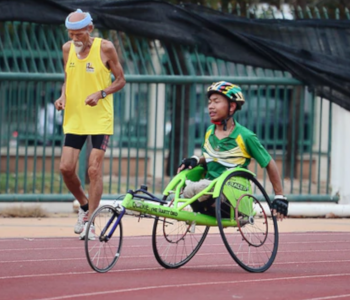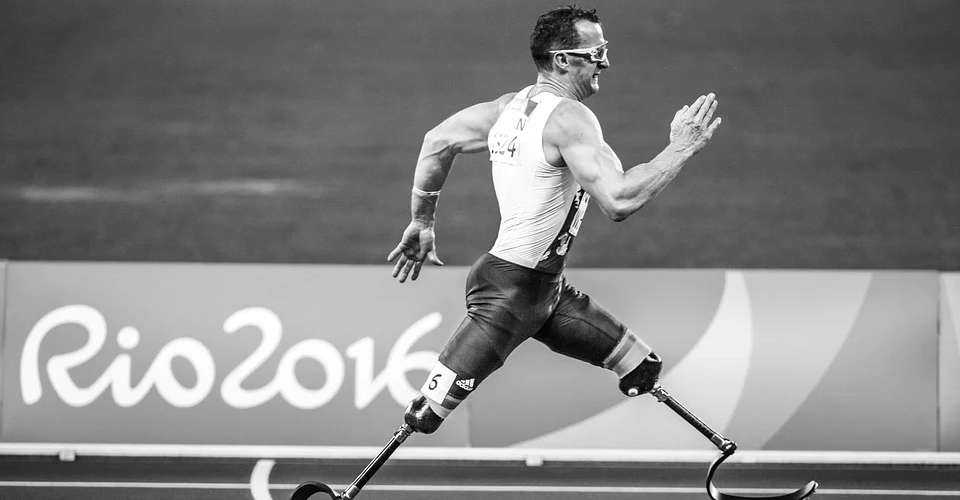The Paralympics as a Showcase of 3D Printing Technology
Adaptability is one of the more unique benefits of 3D printing as a manufacturing technology. Compared to subtractive methods such as milling, 3D printing is capable of reproducing parts with much more complex geometries. A 3D printed product can also be customized to the user, making them excellent options for a prosthesis.
Though 3D printed products are not exactly known for mechanical strength, the technology has come a long way. This year’s Paralympics (and many other previous versions) serves as a showcase of the possibilities of high-performance 3D printing.
Addressing unique needs

Despite the sophistication of modern sports equipment, they are still limited by one thing – they are designed to be used by able-bodied athletes without handicaps. There are several good reasons why major sports brands stick to these standard equipment. They have a huge market and can be cheaply mass-manufactured, providing excellent profit margins.
In para-athletics, mass-manufactured sports equipment simply will not do. Each athlete with a disability may require prosthetics or equipment that is unique to their body or for the event they are participating in. Producing these one-off parts can be very expensive, especially if it is done using traditional manufacturing methods. There is also a significant cost involved in doing extensive trial and error cycles in this equipment to optimize them for competitive sports.
The great thing about 3D printing is that it’s still economical, even if you just have to create two or three copies of any given part. This certainly comes in handy for athletes who need prostheses molded to their body parts or to their specific needs.
An excellent demonstration of this concept is the case of Florian Jouanny, a quadriplegic para-cyclists who won several medals in the 2020 Paralympics. Jouanny struggled with maintaining a grip with his hand, so a custom handbike handle had to be created for him. French company Athletics 3D worked with Jouanny to come up with a design that adjusted to his disabilities, improving his grip and using his strength to produce more power for the handbike.
An interesting tidbit about this story is that Jouanny made the prototypes at home using a Zortrax M200 3D printer and Z-ULTRAT filament. The fact that such a sophisticated 3D printer can be used at home made Jouanny feel more involved in the design process. This story also demonstrates how the reliance on a digital workspace can make 3D printing projects fertile ground for collaboration.
A perfect combination with 3D scanning
The perfect complement for 3D printing in this specific field is 3D scanning. This is the kind of technology that makes it possible to make parts and equipment that is customized to the morphology of any athlete.
In the sport of wheelchair racing, the gloves of the athletes are equally as important as the shoes of runners. Gloves must be comfortable, snug, and have a good grip on the wheels. Considering how critical these are, ready-made gloves simply are not good enough at the level of competition of the Paralympics.
To make sure that these wheelchair racing gloves perfectly fit, the hands of the athlete can be 3D scanned. The digital model of this scan can then be used as the template for the design of the gloves. This perfect grip can make a huge difference in winning a racing event, especially since athletes do not have much leeway to customize their wheelchairs.
Australian archer Taymon Kenton-Smith also benefitted from 3D printing technology. Born with a partial left hand, a custom prosthesis had to be made to allow Kenton-Smith to grip both hard and soft materials. 3D scanning was used to make sure that the grip fits the athlete’s left hand perfectly. As was pointed out in this story, multiple copies of the grip can be made so that replacing a broken one is easy. 3D printing also ensures that every single copy follows the exact design.
3D scanning can also be used to fine-tune the performance parameters of sports equipment. For instance, a company called Artec 3D used their 3D scanner coupled with a wind tunnel to design what they claim to be the world’s fastest cycling skinsuits. The goal of the exercise was to used 3D scanning to create anatomically accurate models of the athletes. The models were then used as templates for designing the skinsuits to reduce drag as much as possible.
Getting the perfect fit is all about enhancing comfort, performance, and stability. By 3D scanning the body parts of an athlete, customized gear can be made and reproduced through 3D printing. This combination of complementary technologies is going to prove to be revolutionary for all athletes – whether they have disabilities or not.
3D printing with high-performance materials

Design is just one part of the equation in making equipment fit for competitive sports. These parts also need to be made with materials that can withstand extreme levels of mechanical stress. Material selection has always been a weakness of 3D printing technology. Fortunately, there are now modern measures that can help bridge this gap.
Sports equipment do not just need to be strong – they also have to be flexible and as light as possible. Back in 2016, German cyclist Denise Schindler upgraded her prosthetic leg from carbon fiber to polycarbonate. This resulted in a 500-gram weight reduction that was already considered groundbreaking back then.
Publicly listed Markforged is a brand that has been at the forefront of the high-performance 3D printing market. The company’s Stockholm-based partner, 3D Verkstan, played a huge role in supporting athletes for the Tokyo Paralympics. Through 3D Verskstan, a local tandem cycling tested a custom carbon fiber crankset combined with standard metal Shimano parts.
Markforged also worked with UK-based SolidPrint 3D to come up with a custom crank arm for the handbike of British champion para-triathlete Joe Townsend. Using continuous carbon fiber printing, the custom parts were made with superior strength and durability.
Townsend has then gone on to found JT Custom Adaptive, a company that offers 3D printed hand grip parts for para-athletes. Services such as that offered by Townsend offer opportunities for para-athletes to train and compete with custom-made adaptive equipment that are not prohibitively expensive.
Although the majority of sports gear are 3D printed with carbon fiber, titanium is also an option when strength is the priority. In 2016, Anna Grimaldi won the gold model for New Zealand using a titanium arm for weight training. The arm was made via an electron beam melting process using titanium powder as raw material. This attachment was strong enough to allow Grimaldi to lift 50 kilograms of training weights off the ground.
The technology to print with high-performance materials already exists, but it is still far too expensive and inaccessible for casual 3D printing enthusiasts. Hopefully, the Paralympics provides enough of a platform for this level of 3D printing to become more prominent.
Final thoughts
It’s quite unexpected, but the Paralympics has proven to be the event that made lots of people pay attention to the technology of 3D printing. People are often surprised at how heavily 3D printing is involved in these types of events, or even that 3D printed parts are tough enough to be used by athletes.
Para-athletics highlights just how adaptable 3D printing can be. It has allowed para-athletes to make the best of their abilities and compete on the same level of playing field. This is one use case in which 3D printing will likely become a mainstay.


